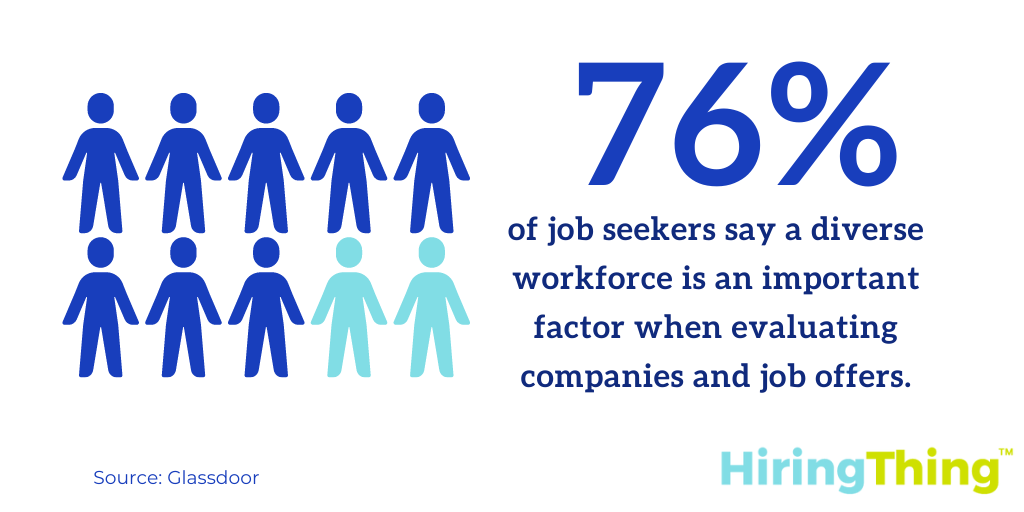Breaking Down Common SaaS Growth Barriers

The SaaS industry is growing at an unprecedented rate. Gartner forecasts that the SaaS industry will grow 17% by the end of 2022. The industry has grown 5x since 2015, and by 2026 more than 50% of organizations will have centralized SaaS management. In fact, most companies currently use over 200 SaaS applications.
.jpg?width=1024&name=More%20Blog%20Stats%20(7).jpg)
Sustainable growth is the goal of most companies. It’s even more important for those in the SaaS world who face a barrage of competition—it’s an oft unforgiving industry where 92% of SaaS companies fail within three years, despite steady growth and funding. Whether companies are trying to grow their reach, revenue, employees, or customer base, they must do so strategically, ensuring they have the infrastructure and processes to support said growth. Growth comes with challenges, and navigating those challenges unsustainably can make your SaaS vision another failed statistic.
HiringThing survived the startup stage—we were founded in 2012—but have just recently experienced one of our biggest growth spurts. We’re proud to say we have successfully navigated the pitfalls that come with new and unprecedented growth. This post will share common SaaS growth challenges and provide strategies for preparing and overcoming them.
Table of Contents
- Talent Acquisition
- Expanding into New Markets
- Customer Retention
- Development Time and Costs
- Operational Efficiency
Common SaaS Growth Challenges and Solutions
Talent Acquisition
Businesses across all industries struggle to find and retain highly-qualified talent, an especially significant challenge for organizations looking to grow. Talent acquisition is further complicated for SaaS companies since there’s a massive shortage of developer talent. CNBC reports the developer shortage will “be alarming” for SaaS companies—by 2030, forecasts show the number of developer vacancies will rise by almost 22%, while the average growth rate of new developers is just 8%.
Additionally, growing SaaS organizations are looking to invest in sales, marketing, customer support, product, accounting, and HR professionals. Having the right team in place can help facilitate sustainable growth for a SaaS organization—that’s what we credit with our recent growth spurts—and ensures you have the labor force to support that growth.
Here are some tips forward-thinking SaaS companies can use to take their talent acquisition to the next level.
Prioritize Flexibility and DEI
To attract top talent to your SaaS organization in today’s climate, you’ll need to appeal to what today’s job seekers want. They overwhelmingly want flexible schedules and a commitment to diversity, equity, and inclusion—one-third of job seekers won’t apply to companies that don't prioritize diversity, and 80% of workers would choose a job with a flexible schedule over one without.

Need help with your DEI efforts? Start with recruiting by checking out our HiringThing Guide to DEI Recruiting.
Nurture Internal Talent
Meaningfully nurturing your internal talent and ensuring they have the tools and skills they need to move up or over in your company means you have to focus less on talent acquisition. Additionally, this will help retain more employees. A lack of career development opportunities has been the top reason employees leave a company for 10 consecutive years, and 58% of employees say their workplace didn’t have enough growth opportunities to stay long-term.
Utilize Recruiting Technology
Recruiting technology, like an applicant tracking system (ATS), can help speed up hiring and net companies higher-quality candidates. 86% of companies who utilize an ATS say it has helped them hire faster, and 78% say it has improved the quality of their hires. Gartner found that 94% of ATS users say technology has positively impacted their talent acquisition.
.jpg?width=1024&name=More%20Blog%20Stats%20(8).jpg)
Omit College-Degree Requirements
A 2019 recruiting study found that 45% of recruiters and hiring managers say a candidate’s potential is the most crucial part of their application, 63% of employers say degree requirements make it hard to fill positions, and Indeed found that while organizations include qualifications to weed out bad candidates, they typically dissuade good-fit candidates. Omitting degree requirements opens your company up to an entirely new talent pool, which is especially important in the SaaS industry, where many developers are getting their starts at boot camps or other self-taught methods over college degrees.
Expanding into New Markets
Growing SaaS companies are looking for ways to get their products and services into more customers’ hands which can mean expanding into new markets (especially if you’re a vertical SaaS gathering customers from a limited market).
While it may be challenging to break into new markets, it’s certainly not impossible, especially if you’ve got a stellar team to help with marketing research.
The first thing you need before breaking into new markets is a solid product that solves user challenges (if you don’t feel confident in your product, you’re probably not ready to break into new markets yet) with unimpeachable messaging that all stakeholders in your company can easily and dynamically explain.
Take Time for Market Research
Understand that market penetration will be challenging, so don’t rush this. Take time to research various markets, and understand their nuances. Identify potential customer personas and solution deficiencies, and determine whether or not your product is ready to penetrate these markets as is or needs additional features, functionalities, or solutions.
Some considerations you must make before deciding if you’re prepared to enter a new market include:
New Market Considerations
Do you have a base established?
First and foremost, you need product positioning and messaging, with website updates and a marketing strategy that addresses these new markets.
How much education do customers in the new market need?
Once you’ve established your marketing base, you need to figure out what level of education this market has on the benefits of your solution and your product. Ask yourself:
- Do you have educational content that can be repurposed for this new market?
- What additional educational content needs to be produced?
- How is the messaging different from your core market?
- How will your new content stand apart from the content of your competitors?
- Are your sales and customer service teams able to deliver this education if necessary?
How will you disrupt this new market?
We know that “disruptor” has become one of the more annoying buzzwords of the past couple of years, but it has merit here. If you’re going to penetrate a new market, you need to have something that sets you apart and differentiates you from your competition. Otherwise, you might as well stay in the safety of your sandbox. What about your products and solutions merit breaking into this new market? What will make your customer personas take notice? How is your solution packaged in a way they haven’t thought of yet? Spend plenty of time figuring out what makes you unique and what positive waves you’re about to cause.
What solution would bridge that gap between your current customers and the customer personas of a new market?
Is it a solution you have already or something you need to develop (or outsource)? There’s nothing wrong with adding new features and solutions if you’re looking to break into a new market, but make sure the new features and solutions work for your current customers, too.
Expanding into new markets is especially critical for vertical SaaS that serves niche markets. Niche markets have niche challenges, so we wrote Strategies for Overcoming Common Vertical SaaS Challenges.
Customer Retention
Your loyal customer base is the bedrock of your SaaS company. It is key to helping your organization grow to the next level—a 5% increase in SaaS customer retention can increase profits between 25-95%. The average churn rate for a SaaS organization is 3-8%, and the average annual churn is 32-50%. It’s crucial for organizations looking to grow their customer base and company to put time and resources into achieving the best retention rate they can.
.jpg?width=1024&name=More%20Blog%20Stats%20(9).jpg)
Prioritize Excellent Customer Service
84% of customers say a company's experience is just as necessary as its products and solutions. Customer experience is integral to SaaS companies growing their revenue and business, with 86% of customers saying they’re willing to pay more for a great experience. Today’s consumers have never had more freedom of choice regarding service providers, so build and prioritize a robust customer support team and strategy.
.jpg?width=1024&name=Copy%20of%20More%20Blog%20Stats%20(12).jpg)
Be Attuned to Customer Wants
Growing SaaS companies often prioritize automation, which is understandable. However, be cognizant that you’re not automating so much of your customer service or support that they can’t talk to someone. 82% of consumers want more human interaction. What else do your customers want? Find that out because in the U.S., even when people love a company or product, 59% will walk away after several bad experiences, 17% after just one bad experience.
.jpg?width=1024&name=More%20Blog%20Stats%20(10).jpg)
Prioritize Usability
30% of SaaS users say a SaaS product is easy to use if their non-technical employees can easily learn how to use it, yet 56% of SaaS users also indicated that they consider most SaaS solutions very challenging, and 43% of SaaS users say that if the software is difficult to use, they won’t use it, even if the features and price points are what they were seeking. Constantly audit and improve your product’s usability and user experience to keep customers returning.
Providing customers new solutions, robust onboarding, and not eschewing your core competencies are all additional strategies to aid retention. We wrote “Five Ways for HR Systems to Prevent Customer Churn” about retaining customers. While it’s focused on HR SaaS solutions, most tips and strategies there apply to all SaaS organizations. Do you know what another way to keep your retention rates high is? Increasing your stickiness. We have resources for that too! Check out our post about keeping SaaS products stickier!
Development Time and Costs
Many SaaS organizations expand and grow by adding new solutions and products to their original core competency. It’s a smart move that can help you expand into new markets and help increase customer retention, but it can be costly and time-consuming, especially for younger companies.
Estimates place the cost for developing a SaaS market viable product (MVP) between $50-250k. Remember this is an estimate, and costs can be much higher. Additionally, unexpected changes mean that 53% of software development costs 189% more than their original estimates, and 70% of software development costs occur after implementation.
Build times range from 8-9 months to get a platform running. Remember that your team's time working on this new MVP means they won’t be working on their normal duties. If you want to save money and resources and go to market quickly, outsourcing via white or private labeling may be your best bet.
White Label and Private Label Your SaaS into a PaaS
A big trend in SaaS over the past few years is the rapid growth of platform-as-a-service (PaaS) that encompasses partnering with third parties to develop additional services and products for existing SaaS organizations that SaaS companies can market to customers as either third-party integrations or as proprietary new solutions via white or private label partnerships.
Data shows that 59% of businesses outsource in some capacity to cut costs. You can think of white labeling or private labeling as outsourcing. Instead of taking a chance on someone whose experience and effectiveness may not be tested, you’re letting an expert team manage and support your new SaaS solution, unbeknownst to the end-users you serve, who believe this private label product to be one of your proprietary applications.
.jpg?width=1024&name=More%20Blog%20Stats%20(11).jpg)
White and private label are used interchangeably, but there’s a critical difference. White label is used more prominently and means that a white label developer creates a solution other companies purchase and get fit with their brand’s logo and colors, which they then market and sell on their own. Private labeling takes things a step further and allows customers to make customizations to fit their business needs.
Private labeling is a good tool for companies looking to grow because it allows them to quickly and cost-efficiently add new solutions, go to market fast, and expand the bandwidth of an organization’s team by gaining the expert support of the private label developers’ staff, perfect for a growing organization trying to scale.
Private labeling is an exceptionally savvy mood for Growing Startups.
Operational Efficiency
Did you know that up to 40% of the average employee’s time is spent doing non-strategic work, which includes troubleshooting, administrative tasks, learning the minutiae of new applications, or dealing with befuddled customers? That’s a large chunk of time that could be used to do strategic work pushing a company’s growth.
Automation
90% of employees feel burdened by the non-strategic tasks they think can easily be automated, 68% of employees feel they’ve suffered because of work overload, and 81% of workers say they’ll reach a breaking point if they don’t have help from automation. Additionally, 97% of organizations believe automating business processes is crucial for success in our highly digitized world. It’s safe to say that to grow in a sustainable way for your workforce, today’s SaaS companies need to automate as many tasks as possible. If you’re not investing in programs that will automate your processes, you’re doing your workforce a disservice and standing in the way of growth.
.jpg?width=1024&name=More%20Blog%20Stats%20(12).jpg)
Ease of Use
Ensure your service and solutions are well-defined and easy for customers to use. This will help reduce the time your customer service and success teams spend on unnecessary inquiries and allow them to proactively offer their services to your customers, delighting them and turning them into brand advocates for your SaaS company.
Scaling Infrastructure
Scaling could be complex because there’s no exact science for predicting how much demand there will be for your solution. Sustainable scalability is about not over- or under-investing in your infrastructure. Ensure that every department and every team member understands what they need to do and how their duties will change if the company experiences swift growth. Strategize what internal processes need to be in place and what additional solutions, resources, and technologies will be required to support that growth. Invest in technology built to scale and ensure the proper team members know how to utilize said tech.
About HiringThing
HiringThing is a modern recruiting platform as a service that creates seamless hiring experiences. Their private label applicant tracking system and open API enables technology and service providers to add hiring capabilities to their solution. Approachable and adaptable, their platform empowers anyone, anywhere, to hire their dream team.



